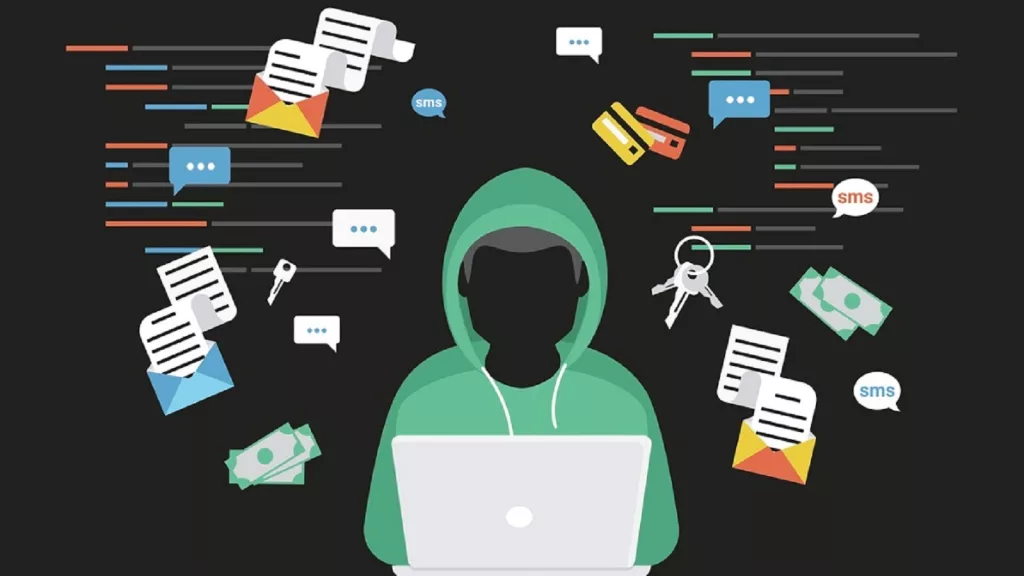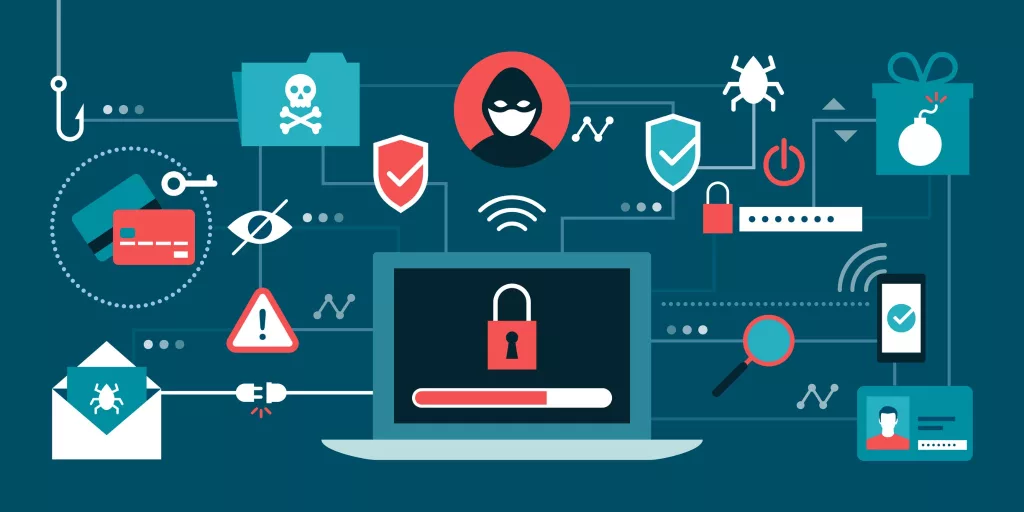The Top 5 Cybersecurity Threats to Watch Out For in the Coming Years
Introduction Cybersecurity isn’t something you can afford to ignore in this day and age. As technology becomes more ubiquitous, cyber threats have become ever more sophisticated leaving organizations of all sizes more vulnerable to attack. It used to be that only those operating at the highest level of security needed to worry about the latest threat but now more than ever you need to stay aware of the potential for risk that comes with being connected online. In this article, we’ll discuss the latest and greatest in cyber threats and what you can do to stay ahead of them. From ransomware to phishing attacks, we’ll explain the top five types of attacks and how they work so that you can be better prepared to defend…
Introduction
Cybersecurity isn’t something you can afford to ignore in this day and age. As technology becomes more ubiquitous, cyber threats have become ever more sophisticated leaving organizations of all sizes more vulnerable to attack. It used to be that only those operating at the highest level of security needed to worry about the latest threat but now more than ever you need to stay aware of the potential for risk that comes with being connected online.
In this article, we’ll discuss the latest and greatest in cyber threats and what you can do to stay ahead of them. From ransomware to phishing attacks, we’ll explain the top five types of attacks and how they work so that you can be better prepared to defend against them and your own worst enemy in the coming years.

1. Malware and Ransomware Attacks
When it comes to cyber threats, you can’t ignore malware and ransomware attacks. Malware is malicious software designed to cause damage to a computer or website while ransomware is a form of malware that locks access to a device or its files until the victim pays a ransom.
These threats are still very much out there and become more sophisticated every year. Ransomware attacks have become so common that some criminals now offer subscription services for monthly attacks! It’s critical that you stay up-to-date on the latest malware and ransomware trends and install protection on all of your devices as soon as possible.
2. Phishing Attacks
The second cybersecurity threat you should be aware of is phishing attacks. Phishing attacks happen when someone disguises themselves as a trusted source to gain access to sensitive information like passwords or credit card numbers.
These attacks usually involve a malicious website or email that looks legitimate but is actually designed to steal your data. The malicious actors behind these phishing attacks will often impersonate banks, government agencies or other well-known companies in order to trick unsuspecting victims into giving up their information.
In response to this prevalent threat, it is becoming increasingly crucial to equip oneself with proper knowledge and skills. A critical method to empower individuals against these deceptive threats is through phishing awareness training. This type of training teaches you to identify suspicious emails, websites, and communications that could potentially be phishing attempts. By understanding the tell-tale signs of a phishing scam, you can better protect your sensitive information from falling into the wrong hands.
3. Social Engineering Attacks
Social engineering attacks are an insidious way of accessing data by exploiting human tendencies such as curiosity and trust. Criminals use these attacks to manipulate people into providing confidential information like financial data or passwords.
Common social engineering attacks include phishing emails which may also include vishing (by phone), smishing (via SMS) and baiting (placing infected USBs in public spaces). The most popular phishing attack is the business email compromise often targeting C-level executives in a company or human resources departments with fake emails from trusted contacts.
It’s important to be aware of what to look for in a social engineering attack:
- Unusual sender name or email address
- Request for sensitive information
- Spellcheck errors or other grammatical errors
- Urgency created by a deadline
- Threats of some consequence if action isn’t taken quickly.
To prevent falling victim to social engineering attacks, it’s important to understand how they work and be vigilant when engaging with suspicious emails or phone calls.
4. Cloud Computing and IoT Vulnerabilities
Cloud computing, which is the use of remotely hosted services and applications, is incredibly convenient and efficient. Unfortunately, it comes with a big downside; it’s vulnerable to hackers. Cloud computing systems are attractive to criminals because they can take advantage of weak security measures or user practices that could provide access to a larger target like a business’s entire customer database.
The same goes for Internet of Things (IoT) devices.In this day and age, many homes are equipped with “smart” devices connected to the internet: security cameras, TVs, lights, door locks, kitchen appliances, etc. It’s a great way for you to have remote control over your home but if your device isn’t secure enough or you don’t update it regularly, you’re leaving yourself open to cyber attacks.
5. Cloud Security Breaches
Cloud security is one of the leading cyber security threats in the coming years. With more and more businesses relying on cloud computing, they are at risk of malicious actors breaking into their system and accessing private data as well as using cloud resources for nefarious purposes.
Here are some of the most common risks associated with cloud computing:
- Data Breaches – Unauthorized users can access your data stored in the cloud if your security protocols aren’t up-to-date or you fail to encrypt sensitive information.
- Malware Attacks – A hacker can inject malicious code into your files on the cloud to gain access to sensitive information.
- Distributed Denial-of-Service (DDoS) Attacks – Hackers can use a large number of computers to send requests to a single server, bringing it down due to overload.
- Phishing Scams – Hackers can impersonate legitimate companies and organizations in order to trick users into giving up confidential information such as login credentials and credit card numbers.
The best way to protect yourself from these threats is by investing in robust security measures and making sure that your team is educated about importance of cybersecurity and its best practices.

Ways to Mitigate Cybersecurity Risk
It’s important to remember that you’re not powerless against these threats. There are steps you can take to mitigate your risk.
Clicking trusted links
You can also help protect yourself against these threats by being cautious when clicking links and downloading files by only visiting trusted websites and backing up your data on a regular basis. Be aware of emails and websites that look suspicious. If something seems off, don’t click on any links or provide any information.
Use two factor authentication
Use two-factor authentication wherever possible. This will ensure that even if someone does get access to your account, they won’t be able to get into it without the second factor (a code sent to your phone).
Regularly update devices and software
Making sure that your devices, software and operating systems are up to date will help protect you from the latest threats. Not only does this help keep your data safe but it can also increase the speed and performance of your devices.
Use strong passwords
This may seem like a no-brainer but you’d be surprised how often people don’t create strong passwords or use the same password for multiple accounts. Make sure that each password is unique and complex using a combination of upper- and lowercase letters, numbers, and symbols. You should also try using a password manager to securely store them all in one place.
Regularly back up data
It’s always a good idea to back up any sensitive data in case of an attack or hardware failure. This ensures that no matter what happens, you still have access to critical information like financial records or customer data. Plenty of cloud-based services out there make backing up your data simple. Just make sure they offer adequate encryption before signing up. Regularly backing up your data will give you an extra layer of protection against any malicious activity.
Implementing these steps can go a long way toward keeping your business safe from potential malware and ransomware attacks.
Conclusion
Data security is an ever-evolving challenge that requires ongoing vigilance and adaptation. While the top five cybersecurity threats outlined above represent the most immediate challenges. Organizations and individuals should also pay attention to emerging trends and technologies that could open up new avenues for attack. Ultimately, taking proactive measures to prevent cybercrime from occurring in the first place is the best way to protect your digital assets as well as your customers’ and employees’ data. Being aware of the latest cybersecurity threats and implementing security protocols to minimize the risks can help you stay ahead of the curve and better protect your business and its most valuable assets.



